Turning a Tragedy Around
It was the phone call no one wants to receive. Robert Sheeley, associate vice president of facilities at Southern Connecticut State University in New Haven, Conn., was awakened in the early hours of the morning the day before Thanksgiving.
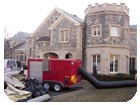
 It was the phone call no one wants to receive.
It was the phone call no one wants to receive.
Robert Sheeley, associate vice president of facilities at Southern Connecticut State University in New Haven, Conn., was awakened in the early hours of the morning the day before Thanksgiving.
“A main water line has ruptured on campus,” the campus security officer said. “It’s the library.”
It took only seconds for Sheeley to realize the fate of nearly 190,000 literary volumes, original documents and archives, the University’s extensive collection of paintings and sculptures, and a rare collection of African artifacts hanged in the balance. The University library’s collection of books and its permanent art collection, along with documents and archives, had been moved to the lower level on a temporary basis only weeks before while construction of a new addition to the building was in progress. The next few hours were critical.
Arriving on site within minutes, Sheeley’s worst fears were realized. The entire ground floor of the Hilton C. Buley Library was submerged in up to 8 feet of water. Thousands of volumes of books were afloat in a pool of muddy water, and the permanent art collection was submerged and saturated.
The city’s Department of Public Works shut off the flow of water to the library. Shortly thereafter, fire department personnel and public utilities crews began the task of pumping the water from the storeroom, a process that, when completed, left behind nearly two feet of mud, sludge and various other debris.
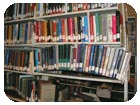
“Some of the books submerged in areas where there was up to eight feet of water, had expanded so much that they actually busted the welds of the metal shelving,” McQuillan said. “It looked like a war zone.”
McQuillan and his crew were hired by ServePro of Manhattan to begin the drying process. Shamrock used the Dryvex MC5200 to dry the building, using clean outside air heat-conditioned to 5 percent to 15 percent relative humidity. Blown into the wet structure via flexible ductwork, the heated air, combined with air movers, results in moisture releasing from the wet content in the structure. A second return blower accelerates the drying process by extracting the moisture-laden air from the structure.
“The affected area was approximately 25,000 to 30,000 square feet,” McQuillan said. “The drying process was accomplished in different stages, about three days at each setup before we would move to another location. The entire building was dry in 10 days, which is important to help prevent secondary structure damage from mold and bacteria growth. It was quite impressive.”
Simultaneously, crews from Document Reprocessors of Middlesex, N.Y., and The Chicago Conservation Center descended on Buley Library, establishing triage areas to begin the restoration. Artwork and artifacts underwent an initial surface cleaning to remove a thin layer of silt and sludge, each piece catalogued with corresponding bar codes for documentation. Each work was then evaluated to determine the technique best suited for recovery.
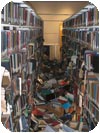 All documents and books were then removed from the site. Due to the shear magnitude of the project, restoration on several of the works continues today.
All documents and books were then removed from the site. Due to the shear magnitude of the project, restoration on several of the works continues today.
“It was a massive undertaking of several companies and organizations working together to make things happen,” April Hann, vice president of the Chicago Conservation Center, said. “Timing was very critical. The longer a piece sits in water, the more susceptible it is to greater damage. The coordination efforts were incredibly streamlined. University personnel along with the contractors knew exactly what to do and who to call. As a result, we were able to save the vast majority of the collection.”
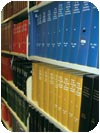
Books were boxed, labeled and bar coded then placed into 18-foot trailers for freeze drying. The vacuum freeze-drying process compresses books back into their natural shapes, minimizing cover board warping. The process allows most books to be returned directly to shelves with no additional restoration required.
During the process, materials are loaded into a vacuum chamber, which by reducing the pressure along with the use of controlled heat, vaporizes the water/ice. The resulting vapor is removed from the chamber by specially designed vacuum pumps. The extracted and isolated vapor is then heated and converted to steam, and exhausted to the atmosphere. Of the approximately 190,000 volumes affected, all but about 30,000 were salvaged.
“There is so much emotional turmoil when a catastrophic event happens,” Hann said. “Having a plan in place during a time of duress is of tremendous benefit because at such times, people can rely on the plan instead of having to separate actions and emotions. We work very hard to provide service and support to our clients, recognizing the attachment they have to their collections.”
Hann underscored the importance of preparing a disaster and team plan, whether it is a museum, a library or a private collection.
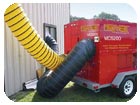
The pieces should be removed from the fire, water or mold-damaged environment as soon as possible. Even if the scene appears secure, there still may be other dynamics of the environment that can further damage the art.
 from running down the piece and pooling at the bottom. Do not wipe the surface of a wet painting. When wet, the paint layer is fragile and can be easily separated from the canvas. Wet photos, books, postcards, stamps or documents that have stuck together should not be separated. Either freeze them or keep them wet.
from running down the piece and pooling at the bottom. Do not wipe the surface of a wet painting. When wet, the paint layer is fragile and can be easily separated from the canvas. Wet photos, books, postcards, stamps or documents that have stuck together should not be separated. Either freeze them or keep them wet.
“If the proper steps are taken in a reasonable timeframe, we can save more than most people realize through prompt response plans and triage expertise,” Hann said. “It’s a very rewarding and gratifying thing. We have the opportunity to save keepsakes, family heirlooms, and priceless works of art, and at the same time minimize the emotional toll such catastrophic events have on those affected.”


Robert Sheeley, associate vice president of facilities at Southern Connecticut State University in New Haven, Conn., was awakened in the early hours of the morning the day before Thanksgiving.
“A main water line has ruptured on campus,” the campus security officer said. “It’s the library.”
It took only seconds for Sheeley to realize the fate of nearly 190,000 literary volumes, original documents and archives, the University’s extensive collection of paintings and sculptures, and a rare collection of African artifacts hanged in the balance. The University library’s collection of books and its permanent art collection, along with documents and archives, had been moved to the lower level on a temporary basis only weeks before while construction of a new addition to the building was in progress. The next few hours were critical.
Arriving on site within minutes, Sheeley’s worst fears were realized. The entire ground floor of the Hilton C. Buley Library was submerged in up to 8 feet of water. Thousands of volumes of books were afloat in a pool of muddy water, and the permanent art collection was submerged and saturated.
The city’s Department of Public Works shut off the flow of water to the library. Shortly thereafter, fire department personnel and public utilities crews began the task of pumping the water from the storeroom, a process that, when completed, left behind nearly two feet of mud, sludge and various other debris.

Cooperation Personified
“It was one of the most impressive displays of cooperation and camaraderie I had ever witnessed,” said James McQuillan, owner of Shamrock Restoration, whose company provided the equipment to begin drying out the building. “When we arrived there were dozens of people on site, and that number grew to well over a hundred. The last thing any of us were thinking about was Thanksgiving.“Some of the books submerged in areas where there was up to eight feet of water, had expanded so much that they actually busted the welds of the metal shelving,” McQuillan said. “It looked like a war zone.”
McQuillan and his crew were hired by ServePro of Manhattan to begin the drying process. Shamrock used the Dryvex MC5200 to dry the building, using clean outside air heat-conditioned to 5 percent to 15 percent relative humidity. Blown into the wet structure via flexible ductwork, the heated air, combined with air movers, results in moisture releasing from the wet content in the structure. A second return blower accelerates the drying process by extracting the moisture-laden air from the structure.
“The affected area was approximately 25,000 to 30,000 square feet,” McQuillan said. “The drying process was accomplished in different stages, about three days at each setup before we would move to another location. The entire building was dry in 10 days, which is important to help prevent secondary structure damage from mold and bacteria growth. It was quite impressive.”
Simultaneously, crews from Document Reprocessors of Middlesex, N.Y., and The Chicago Conservation Center descended on Buley Library, establishing triage areas to begin the restoration. Artwork and artifacts underwent an initial surface cleaning to remove a thin layer of silt and sludge, each piece catalogued with corresponding bar codes for documentation. Each work was then evaluated to determine the technique best suited for recovery.

“It was a massive undertaking of several companies and organizations working together to make things happen,” April Hann, vice president of the Chicago Conservation Center, said. “Timing was very critical. The longer a piece sits in water, the more susceptible it is to greater damage. The coordination efforts were incredibly streamlined. University personnel along with the contractors knew exactly what to do and who to call. As a result, we were able to save the vast majority of the collection.”

Time is of the Essence
“Every minute counts,” Hann said. “It is so impactful with recovery. Each of our staff members gets a great deal of personal satisfaction having a hand in saving priceless works of art, and or items of tremendous sentimental value to their owners.”Books were boxed, labeled and bar coded then placed into 18-foot trailers for freeze drying. The vacuum freeze-drying process compresses books back into their natural shapes, minimizing cover board warping. The process allows most books to be returned directly to shelves with no additional restoration required.
During the process, materials are loaded into a vacuum chamber, which by reducing the pressure along with the use of controlled heat, vaporizes the water/ice. The resulting vapor is removed from the chamber by specially designed vacuum pumps. The extracted and isolated vapor is then heated and converted to steam, and exhausted to the atmosphere. Of the approximately 190,000 volumes affected, all but about 30,000 were salvaged.
“There is so much emotional turmoil when a catastrophic event happens,” Hann said. “Having a plan in place during a time of duress is of tremendous benefit because at such times, people can rely on the plan instead of having to separate actions and emotions. We work very hard to provide service and support to our clients, recognizing the attachment they have to their collections.”
Hann underscored the importance of preparing a disaster and team plan, whether it is a museum, a library or a private collection.

Steps To Take
Hann says it is crucial to understand how to handle damaged works of art in the event of a disaster. Once an emergency has occurred, there are several steps you can take to guard against further damage.The pieces should be removed from the fire, water or mold-damaged environment as soon as possible. Even if the scene appears secure, there still may be other dynamics of the environment that can further damage the art.

“If the proper steps are taken in a reasonable timeframe, we can save more than most people realize through prompt response plans and triage expertise,” Hann said. “It’s a very rewarding and gratifying thing. We have the opportunity to save keepsakes, family heirlooms, and priceless works of art, and at the same time minimize the emotional toll such catastrophic events have on those affected.”
Looking for a reprint of this article?
From high-res PDFs to custom plaques, order your copy today!







